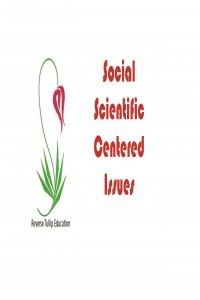Examining the Cultural Elements in the 5th and 6th Grade Religious Culture and Moral Knowledge Textbooks
Examining the Cultural Elements in the 5th and 6th Grade Religious Culture and Moral Knowledge Textbooks
Education is the most important element in transferring culture to children and young people and gaining cultural identity. For this reason, curricula and textbooks has gained importance. For accurate and powerful transfer of culture; it is possible with the curriculum that deals with cultural elements in the best way and with the textbooks prepared for this purpose. The Religious Culture and Moral Knowledge course, which is obligatory in formal education institutions in Turkey as well, plays an important role in reach the next generation and adopting the culture to the next generation. In this study, it is aimed to determine the language, religion, tradition-custom and art culture elements in the 5th and 6th grade religious culture and moral knowledge textbooks. This descriptive research aims to evaluate the cultural elements in the primary education religious culture and moral knowledge textbooks (5th and 6th grade). Research data were collected through document analysis, one of the qualitative research methods. As a result of the research, it is seen that while idioms are included in the religious culture and moral knowledge books, proverbs are not included enough, traditions and customs such as feasting, hospitality, birth, death, naming, and cultural elements related to architecture, music, literature and painting are also included.
Keywords:
culture, cultural elements, cultural transfer religious culture, textbook.,
___
- Arslanoğlu, İ. (2005). Türk değerleri üzerine bir değerlendirme. Felsefe dünyası dergisi, 41, 64-77.
- Bayraktar, S. (2015). YENİ HİTİT 1 YABANCILAR İÇİN TÜRKÇE DERS KİTABININ KÜLTÜR AKTARIMI AÇISINDAN İNCELENMESİ. Hacettepe Üniversitesi Yabancı Dil Olarak Türkçe Araştırmaları Dergisi, (2), 7-23.
- DAŞDEMİR, İ. & TEKİN, S. (2018). Sosyal bilgiler ders kitaplarında türk-kültür ögelerinin kullanımı. Türk Dünyası İncelemeleri Dergisi, 18(1), 215-228.
- Göçer, A. (2012). Dil-kültür ilişkisi ve etkileşimi üzerine. Türk Dili, 729(1), 50-57.
- Ozankaya, Ö. (1992). Ulusal toplumun ve ulusal kültürün kurucu ögeleri. Ankara Üniversitesi Türk İnkılap Tarihi Enstitüsü Atatürk Yolu Dergisi, (10),3.
- Kan, M. O. (2010). Millî Eğitim Bakanlığı Yayınları ilköğretim 7.sınıf Türkçe ders kitabının kültür ögeleri açısından incelenmesi [Yüksek lisans tezi]. Mustafa Kemal Üniversitesi.
- Kılıç, R. (2015). Din ve kültür ilişkisi üzerine. Ötüken Neşriyat, İstanbul.
- Kolaç, E. (2009). SOMUT OLMAYAN KÜLTÜREL MİRASI KORUMA, BİLİNÇ VE DUYARLILIK OLUŞTURMADA TÜRKÇE EĞİTİMİNİN ÖNEMİ. Milli Folklor, 21(82). 22-23.
- Kula, F. (2017). Kültür aktarımı ve kültürel kimliğin geliştirilmesi konusunda yöneticilerin, öğretmenlerin, öğrencilerin ve velilerin beklentileri, görüşleri ve önerileri. [Yüksek Lisans Tezi]. Akdeniz Üniversitesi. 18-19
- TANRIVERDİ, H. (2018). Din-kültür ilişkisi üzerine bir değerlendirme. Ordu Üniversitesi Sosyal Bilimler Enstitüsü Sosyal Bilimler Araştırmaları Dergisi, 8(3), 595-601.
- UZUNPOLAT, Y. & ŞİMŞEK, E. İlköğretim Din Kültürü ve Ahlak Bilgisi Dersi Öğretim Programında Kültür. Din ve Bilim-Muş Alparslan Üniversitesi İslami İlimler Fakültesi Dergisi, 5(2), 260-278.
- ÜNVEREN KAPANADZE, D. (2018). DİL VE KÜLTÜR AKTARIMINDA İŞLEVSEL BİR ARAÇ OLARAK DERS KİTAPLARI: TÜRKÇE DERS KİTAPLARI ÖRNEĞİ. Electronic Turkish Studies, 13(27).4-5
- URL-1 https://kulturun-ogeleri.nedir.org/
- ISSN: 2687-6221
- Yayın Aralığı: Yılda 2 Sayı
- Başlangıç: 2019
- Yayıncı: Bahattin AYDINLI
Sayıdaki Diğer Makaleler
EXAMINATION OF TEACHERS' READING HABITS IN THE PROCESS OF DISTANCE EDUCATION (KASTAMONU EXAMPLE)
Ahmet BEKAROĞLU, Özkan KAHVECİ, Halit ÖZDEN, Mehmet MADEN, Satı DAŞCIOĞLU
FAMILY- SCHOOL COOPERATION IN EDUCATIONAL GOVERNANCE
Gürhan GÜRBÜZ, Orhan KAYHAN, Hüseyin KELEŞ, Nihat FIRAT
Augmented Reality Practice Book For The Hearing Handicapped
TEACHER'S OPINIONS ON SCHOOL ATTENDANCE OF ROMAN CHILDREN AND SOLUTIONS
